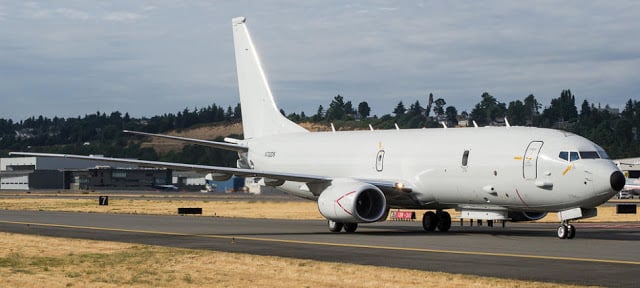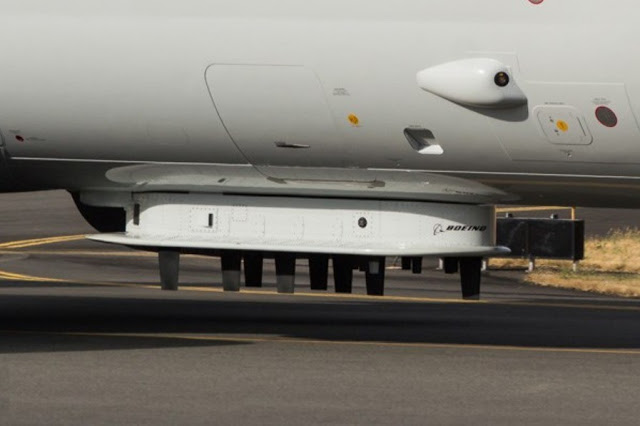Private and Public sector organizations designing and developing net centric equipments
CENTech
Center for Network Centric Technologies
National Engineering and Scientific Commission (NESCOM)
Center for Network Centric Technologies (CENTech) is the leading state-owned organization of National Engineering and Scientific Commission (NESCOM), which provides cutting edge solutions and high-tech consultancy to strategic organizations of Islamic Republic of Pakistan in the complete spectrum of Information Technology including Systems Engineering, Telecommunications, High-end Networking, Software development, Quality assurance,Web Technologies as well as Project management. We provide industrial standard solutions in almost every major technical area of IT and carry out research in many engineering and scientific areas.
The Cyber Security division of CENTech was established in 2010. The journey of four years of cyber security division speaks of many success stories, from 24/7 operational indigenously developed IP-encryptors on Strategic networks to FIPS level-2 certification of standard cryptographic library and from formulation of team of certified penetration testers and auditors to the establishment of nation-wide CERT.
The developed products range from software based Cryptographic applications to rugged hardware security appliances including
Nescom security gateways (IP-encryptors),
vulnerability scanners,
firewalls,
File/ folder encryption and
e-shredder. Apart from this, CENTech provides the network related services which include
Design & planning of secure network,
configuration of network devices,
Data Center Design,
Simulation of strategic networks,
Deployment and management of security devices across networks.
To prove capability of correct cryptographic implementation,
CENTech has undergone a unique experience of certifying indigenously developed crypto module from NIST. The FIPS approved
Tahir Pak Crypto Library (TPCL) mark the presence of CENTech at international cryptographic forum.
TPCL is the first ever FIPS certified product of Pakistan.
TPCL provides functionality of
standard Cryptographic algorithms through API, including AES (128, 192, 256-ECB, CBC), SHA (224, 256, 384, 512), HMAC (224, 256, 384, 512), CTR-DRBG, DSA and key generation module.
The vision of CENTech is to provide nationwide platform that would serve the strategic forces and organizations and in broader sense to entire government of Pakistan in the information security realm. This platform is a forum for research, indigenous development and future planning of secure national level communication networks in nation’s cyber frontiers.
NRTC
National Radio and Telecommunication Corporation
National Radio and Telecommunication Corporation (NRTC) is a World-Class telecommunication and electronic equipment manufacturer. We have built our business around our ability to offer creative and tailored solutions worldwide, providing the best total value while building premier customer relationships. Since 1965, NRTC has been a highly stable and reliable partner for customers who require high-tech communication equipment and solutions. Our success comes from the innovative value proposition we bring to electronic manufacturing………proof of its uniqueness is in our enviable track record for decades. At NRTC, we build lasting relationships with our customers through provisioning of quality solutions and unparalleled 24×7 support based upon commitment and dedication.
At NRTC, we meet challenging demands and excel in competition by continuous up-gradation and use of innovative concepts/state of the art tools. Our R&D is working on modern technologies and designing of wide array of complex telecom equipment, systems and solutions which include;
- Communication Security Solutions
- Backbone Communication Solutions (microwave line of sight Systems)
- Total communication system solutions according to customers’ needs
- Software Defined Radio Systems
- Integrated Land Mobile Radio Systems
- Customized Software Applications Development
- Switching equipment (TDM and IP based)
- Optical Communication Products
Our mission is to provide our customers with world class quality telecommunication equipment which meets all their operational requirements, in time, and at affordable costs. User’s satisfaction is our top priority in the process chain, from receipt of raw material, through manufacturing and delivery, till final acceptance.
FUTURE PROJECTS AND TARGETS
Following are the future manufacturing potential projects:-
Software Defined Radio (SDR)
PRR (Personal Role Radio)
IP Based Military Exchanges
IP Exchanges
Solar Solutions including battery charger
Alternative Energy Solutions
IP Security Gateway (Network Security)
Secure Phone / Fax / Data Device
IP Encryptors
Bulk Encryption Units
Secure Data Links
Radio Intercom System for APC’s and tanks
Microwave Solutions
Platoon Early Warning System
Communication Networking
http://www.modp.gov.pk/gop/index.ph...vRFAlMjBEYXRhL1llYXJfQm9va18yMDExLTIwMTIucGRm (Page 77)
National Radio & Telecom Corporation - Pakistan @
Aeronaut @
balixd @
Fulcrum15 check the website and this brochure. Very interesting
http://ncia.mcs.edu.pk/ncia_wp/docs/NRTC Profile.pdf
Harris
Harris Corporation
Harris is an international communications and information technology company serving government and commercial markets in more than 150 countries. Headquartered in Melbourne, Florida, the company has approximately $5 billion of annual revenue and more than 15,000 employees — including nearly 7,000 engineers and scientists. Harris is dedicated to developing best-in-class
assured communications® products, systems, and services.
Harris Corporation was founded in the 1890s. During its 117-year history, Harris has transformed communications and information technology – from the early printing press, to the Space Age, and to today’s fast-paced digital age. Since its beginnings, it has focused on providing innovative, reliable solutions that deliver critical information at the right place, at the right time, and on the right device.
Today, Harris is one of the only companies focused exclusively on developing the most trusted voice, data and video networks – networks that touch millions of lives every day. Harris solutions are taking network reliability and security to an entirely new level and are solving the toughest technology challenges faced by businesses and governments around the world.
Every day, the company’s employees serve customers around the world, in markets where trusted network solutions are critical to success – defense, national intelligence, civilian and international government, public safety and public service, energy, and maritime, broadcast and new media, healthcare, and enterprise.
Harris Corporation
CARE
Center for Advanced Research in Engineering
CARE is the most celebrated engineering organization in Pakistan. CARE has made history basing national and international recognition in P@SHA and Asia Pacific ICT Alliance Awards in 2011 and 2010. Center for Advanced Research in Engineering (CARE) Certified CMMI Compliant Organization with its office situated at 19- Attaturk Ave, G-5/1, Islamabad. CARE offers broad array of products, expertise and design services in the areas of emerging technologies. Our strong research and development focus has enabled us to position ourselves at the forefront of technology. Our success is based upon Clients focal points. We eavesdrop to our customers’ needs, map their requirements to most suitable technologies thus offer them the right solutions and products. CARE has outstanding products and system design portfolio and it thrives on its-well trained, diverse and experienced team.
Netcentric Systems
-Horus is an integrated vehicle management system comprising of vehicle mounted GPS-based tracking devices, communicating over multiple networking technologies (GSM,GPRS, V-UHF, Satellite) in a hybrid environment and versatile multi-tier command and control infrastructure. It comprehensively addresses the problems of managing, tracking, monitoring and assisting any number of vehicles registered within the system.
The Network Centric Systems consists of a number of hierarchical command posts that receive and process information from different sensors. Timely availability of this information along with orders from the Command Post down to the weapon posts designated to engage a potentially hostile target is of prime importance.
Communication Systems
Defenium
Defenium (Pvt) Ltd
Defenium (Pvt) Ltd previously known as Equinox (Pvt) Ltd is one of the five Companies working under the Panasian Group in the areas of Defence, National Security, Telecommunications, Information Technology and Rail Technologies. Over 40 years in collaboration with globally renowned partners, Defenium has implemented a wide array of major nation –wide projects both in private and public sectors of Pakistan.
Defenium has rich experience spread over decades of delivering and implementing major projects in the fields of Military equipment / Hardware Solutions / Systems, Tactical System, Strategic System, Field Optical Fiber Cable Communication System, Defence Electronics, Encryption Solutions, Air Defence System for Pakistan Armed Forces. Its partnerships over the years have been with good reputed defence manufacturers and solutions providers like EADS, Kongsberg, Heckler & Koch, VOLVO, Bombardier, Sea Force, Crypto AG, Brugg Cables, ASCOM, FIAMM, Ericsson Microwave and NERA. Among many other multinationals, Defenium’s partnerships with M/s Crypto AG and M/s BRUGG Cables of Switzerland are worth mentioning especially in reference with the 2nd National Conference of Information Assurance 2013.
http://ncia.mcs.edu.pk/ncia_wp/docs/DefeniumProfile.pdf
http://www.panasiangroup.com/
Advanced Systems
Advanced Systems (Pvt) Ltd
We specialize in designing and developing high speed, high grade encryption equipment. We designed, developed and made bulk encryption units (SSD-99000 several models). These units are protecting strategic communications of Pakistan from Karachi to Kashmir. We conceived, designed, developed and produced unique and unpublished encryption algorithms. These algorithms are implemented in FPGAs.
We have a seven thousand square feet dedicated facility to research, design, develop and test encryption and produce encryption products. The facilities include various CAD packages, FPGA development tools, communication analyzers, logic analyzers, emulators of various types, software/hardware of several kinds to evaluate encryption strength.
Products:
SSD-99000: Bulk Encryption Unit for E1 (ITU-T G703) & Eurocom D1.
(There are more than 17 Models of SSD-99000).
SSD-99000: (IIB4) Bulk Encryption Unit with Integrated E1, E3 & D1 Interfaces
MIRAGE: Twin E1 (ITU-T G703) Stream Encryption Unit
ZULKERNAIN: Encryption Unit for Satellite Links (V.35)
IXU-4200: Encryption Unit for IP Communications
http://ncia.mcs.edu.pk/ncia_wp/docs/AS1.doc
EfKay Associates
EfKay Associates
Efkay Associates, was established in 1990, and is registered with the Registrar of Firms, as Partnership Company. Ever since it is also registered with Directorate General Defense Purchase (DGDP) and Directorate General Monition Production (DGMP) through them, is involved in supplying different types of equipment to the Armed Forces of Pakistan. It is primarily dealing in supply of, radios, security and surveillance equipment and IT. It has recently set up another subsidiary with the name of Solartronix for the development and marketing of solar products. It is also capable of setting up solar power stations of moderate capacity (up to 20 MW).
Efkay is representing Aselsan ( Askari Electronik Sanayi ) Turkey since 1992. Aselsan is one of the largest companies in the world and manufactures wide range of telecommunication equipment which include HF, VHF, UHF, Microwave and professional radios. Other products include Radars, Electronic Warfare Equipment, Satellite communication, Emergency Communication Systems for Motorways, Highway Toll Collection Systems. It has separate division for manufacturing microelectronics, guidance and electro optical equipment devices.
@
Aeronaut
EFKAY Associates
Micro Electronics
Micro Electronics International Pvt Ltd
Micro Electronics International (Pvt.) Limited, (MICRO) founded in 1981, is a multi-product electronics company, primarily engaged in the development, manufacture and sale of advanced technology radio telecommunication equipment for military and civil application.
The Company is the nation’s leading independent electronics manufacturer supplying radio equipment for specialized mobile, portable, fixed, remote and rugged applications.





















